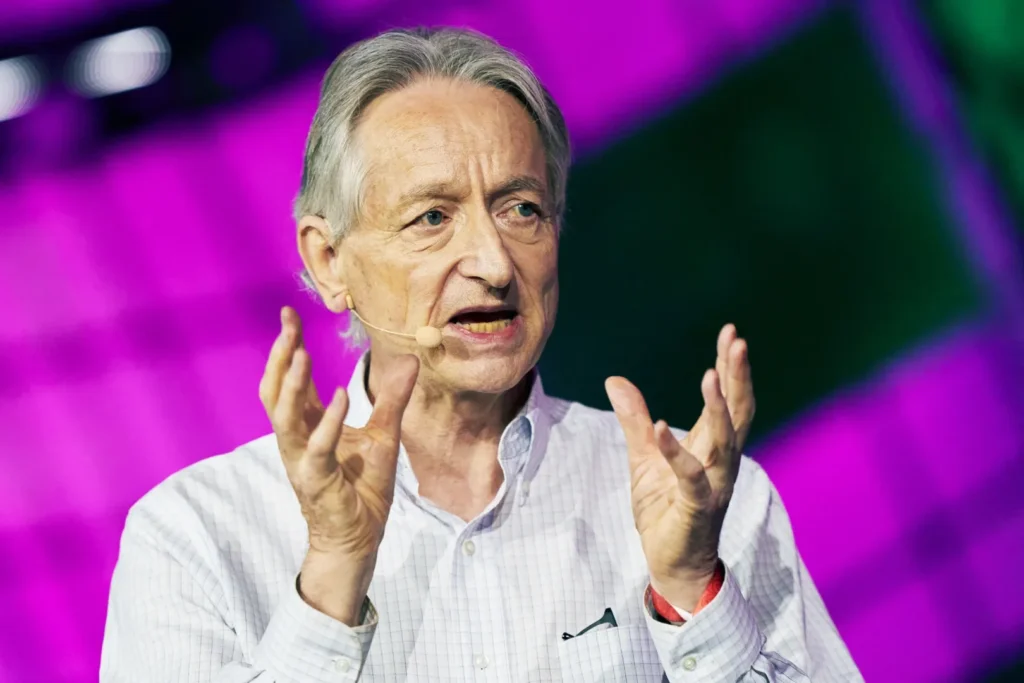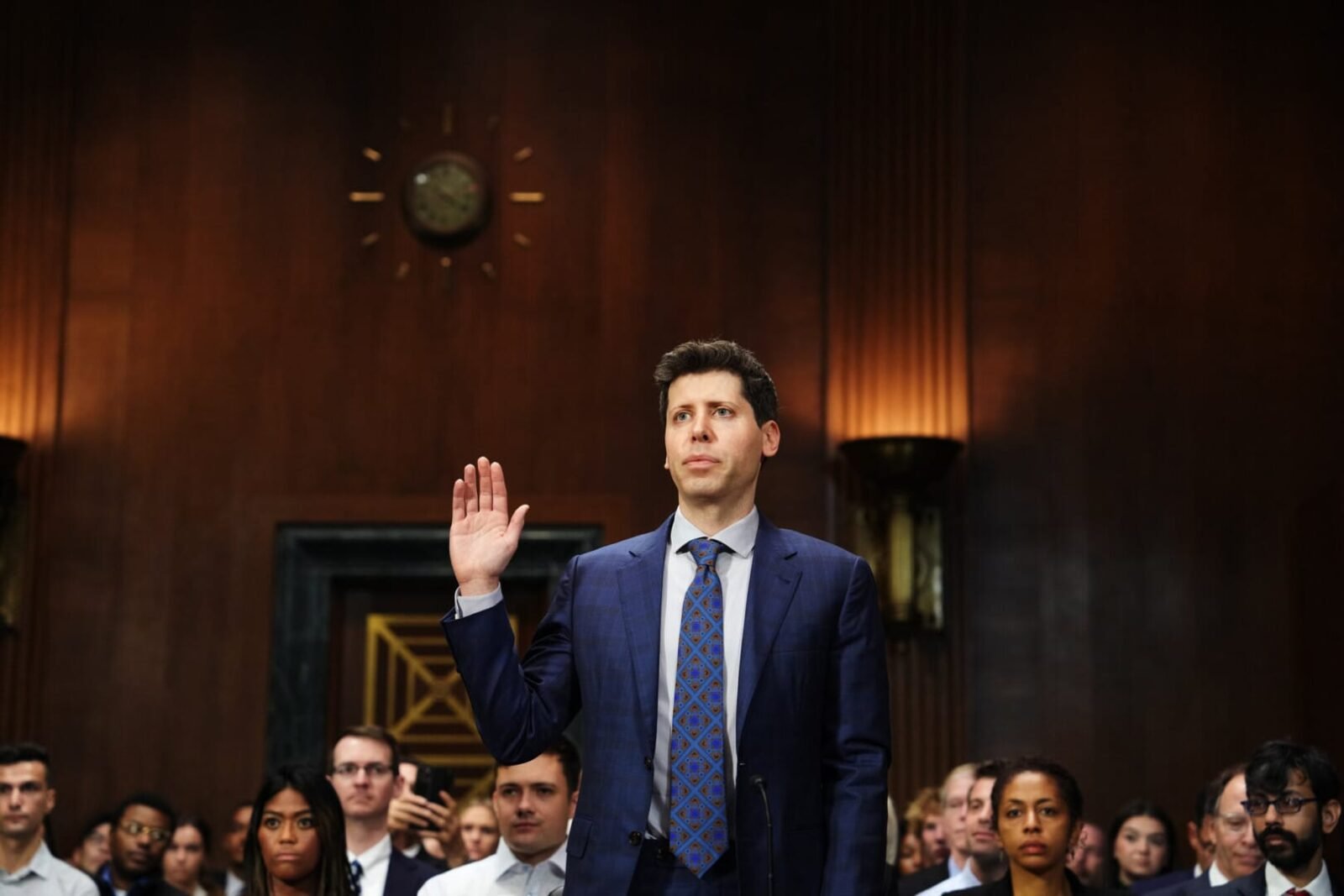OpenAI is known for groundbreaking advancements in AI, but the company has been hit by a wave of high-profile departures that suggest deeper issues under the surface. Chief Technology Officer Mira Murati, Chief Research Officer Bob McGrew, and top ChatGPT researcher Barret Zoph have all left in recent months, reportedly over safety concerns and CEO Sam Altman’s “accelerationist” approach to AI development. Even AI pioneer Geoffrey Hinton, the “Godfather of AI,” has voiced his own concerns, warning that OpenAI’s focus on profit could lead to dangerous lapses in AI safety—a view that has some in Silicon Valley wondering if the company’s rapid growth might be its undoing.
The Growing Rift Between Innovation and Ethics
OpenAI began as a nonprofit with a mission to advance AI responsibly, but in 2019, it shifted to a for-profit model. This pivot has stirred controversy, particularly among industry veterans like Geoffrey Hinton, who argue that safety now feels like an afterthought. Hinton has suggested that the company’s drive for profit and rapid development is eclipsing its responsibility to put sufficient guardrails in place—a sentiment shared by others who’ve recently left the company.
Geoffrey Hinton’s Warning: Profit Over Prudence?
Geoffrey Hinton, often called the “Godfather of AI,” was awarded the 2024 Nobel Prize in Physics, hasn’t held back his concerns about OpenAI’s trajectory. For Hinton, the company’s pivot from nonprofit to for-profit signals a troubling shift. He points out that early promises to prioritize safety now seem more like PR than real policy, as OpenAI moves quickly to monetize advanced AI technology. Hinton has warned that if the company continues down this path, the risks of unchecked AI growth—ranging from bias in algorithms to more existential threats of AGI—may become all too real. He praised his former student, Ilya Sutskever, for playing a key role in Altman’s temporary removal from OpenAI in November 2023.

Geoff Robins / Getty Images
Hinton’s skepticism highlights a broader debate in Silicon Valley: Should AI companies prioritize rapid innovation and profitability or a more cautious approach to developing potentially world-altering technology?
From Nonprofit Idealism to Profit-Driven Accelerationism
OpenAI’s story started in 2015 as a nonprofit built on a mission to push AI safely and collaboratively. But in 2019, the company took a sharp turn, creating a for-profit arm. Now, with Microsoft owning a 49% stake, OpenAI has seemingly put safety on the back burner in favor of rapid AI advancement.
With the profit shift, safety has become more of a checkbox than a guiding principle. OpenAI’s big releases like o1 (originally codenamed “Q*”), show just how far the company is willing to go to stay ahead of the curve. This model isn’t just chatty like ChatGPT; it can solve complex coding problems and reason like a human—abilities that have safety advocates uneasy.
Leadership Drama: Altman’s Influence vs. Safety Concerns
The past year has been full of drama at OpenAI. In November, Altman’s leadership style and his unrelenting push for “accelerationism” led some board members to attempt to oust him. Microsoft’s intervention put him back in the driver’s seat, but it was a wake-up call. This shake-up left OpenAI’s co-founder and chief science officer Ilya Sutskever out in the cold. Known for his caution, Sutskever couldn’t stomach Altman’s pedal-to-the-metal approach and left in May to start his own safety-centered AI venture.
Murati, who left last month, had similar concerns. She stayed at OpenAI after the November debacle, trying to slow down Altman and president Greg Brockman’s go-big-or-go-home strategies. But it seems that efforts to build guardrails just weren’t sticking, and eventually, Murati called it quits.
Safety Sacrifices? Ethics Experts Sound the Alarm
Safety concerns aren’t just a fringe worry—they’re becoming mainstream as OpenAI’s tech grows more powerful and less regulated. Ex-OpenAI researcher William Saunders recently warned the Senate Judiciary Committee that AGI (artificial general intelligence) could upend the economy, jobs, and even national security if rushed out without proper controls. According to Saunders, OpenAI’s current trajectory is a “global disaster” waiting to happen, noting that its high-speed development could leave “significant risks” unaddressed.
And it’s not just former staffers who are worried. Gary Marcus, an AI expert and critic of Silicon Valley’s rush culture, argues that the for-profit switch “solidified what was already clear: most of the talk about safety was probably just lip service.” With OpenAI hemorrhaging money—up to $5 billion in 2024, according to some reports—safety takes a back seat to the race for financial stability.
Financial Pressures and the Future of OpenAI
With major expenses and a need to stay ahead in AI, OpenAI has been securing massive funding rounds, including $6.6 billion from Microsoft and Nvidia. This cash is essential, especially since the company is shelling out millions for licensing and data processing while also facing costly lawsuits from publishers. Geoffrey Hinton and others point out that OpenAI’s “moonshot” for AGI by 2030—a vision Altman recently blogged about—may be exactly the type of thinking that pushed safety-conscious folks like Murati and Sutskever out the door.
The Road Ahead: Innovation or Implosion?
Where does OpenAI go from here? Altman seems intent on an aggressive path, envisioning “superintelligence” in the next decade. But the question lingers: Can OpenAI manage to stay at the cutting edge without compromising safety and ethical standards? As leaders continue to leave, some wonder if this accelerationist mindset will lead to triumphs—or whether OpenAI’s own talent drain might slow it down.
This much is clear: OpenAI’s shift from a cautious, nonprofit mission to an accelerationist for-profit powerhouse has sent shockwaves through Silicon Valley. And with the stakes so high, it’s no wonder that industry insiders like Hinton and former OpenAI staff are sounding the alarm.

Our Reflections
What are our true reflections on the rapid rise of AI? What do we think and where do we stand here? We’re all witnessing, and benefiting from, AI’s transformative impact across countless aspects of our lives, making tasks more efficient and even sparking new possibilities. But is that where our thinking should stop?
The world around us remains full of disparities, with conflicts and inequalities persisting year after year. How will the continued advancement of AI influence this? Could it end up widening the gap, empowering the powerful and sidelining the vulnerable? Or will it ultimately unify humanity against AI? These scenarios can unfold in different timelines along the curve of AI evolution.
My belief is that humanity will inevitably prioritize its own interests, pushing boundaries to the extreme. Unfortunately, I foresee that this relentless pursuit will lead us toward an inevitable nightmare. Show your thoughts in the comments.
- ■ The Growing Rift Between Innovation and Ethics
- ■ Geoffrey Hinton’s Warning: Profit Over Prudence?
- ■ From Nonprofit Idealism to Profit-Driven Accelerationism
- ■ Leadership Drama: Altman’s Influence vs. Safety Concerns
- ■ Safety Sacrifices? Ethics Experts Sound the Alarm
- ■ Financial Pressures and the Future of OpenAI
- ■ The Road Ahead: Innovation or Implosion?
- ■ Our Reflections
